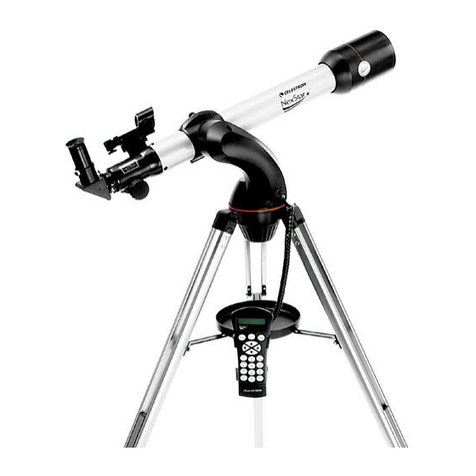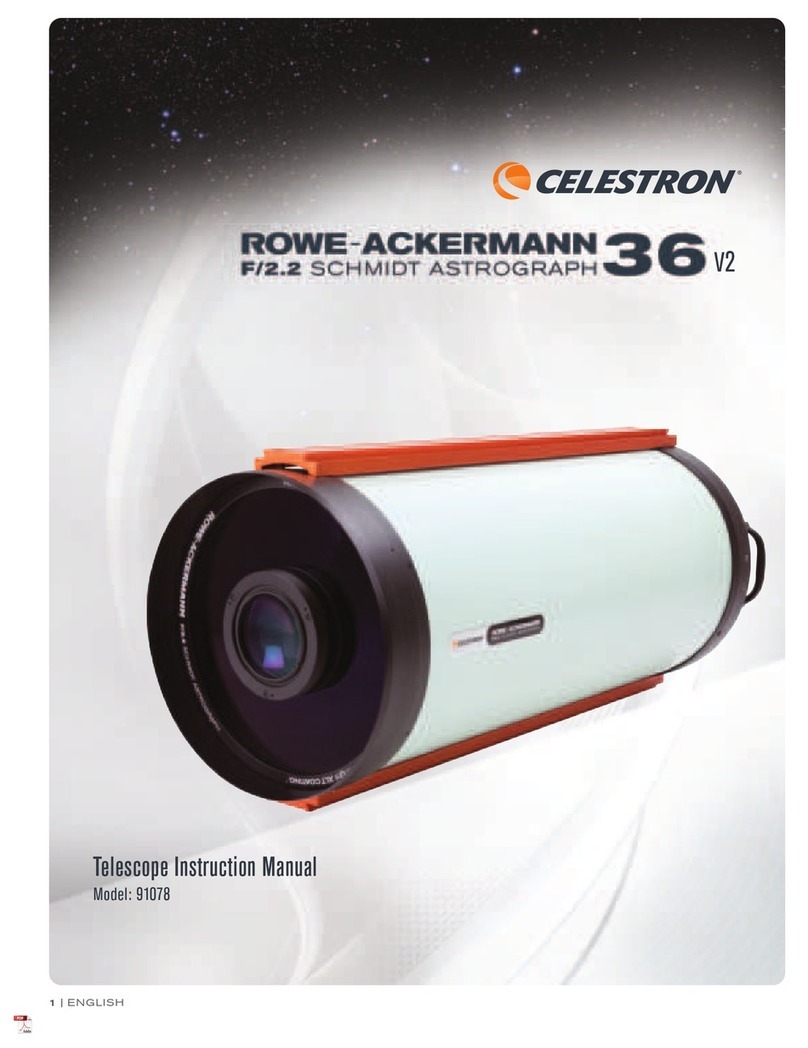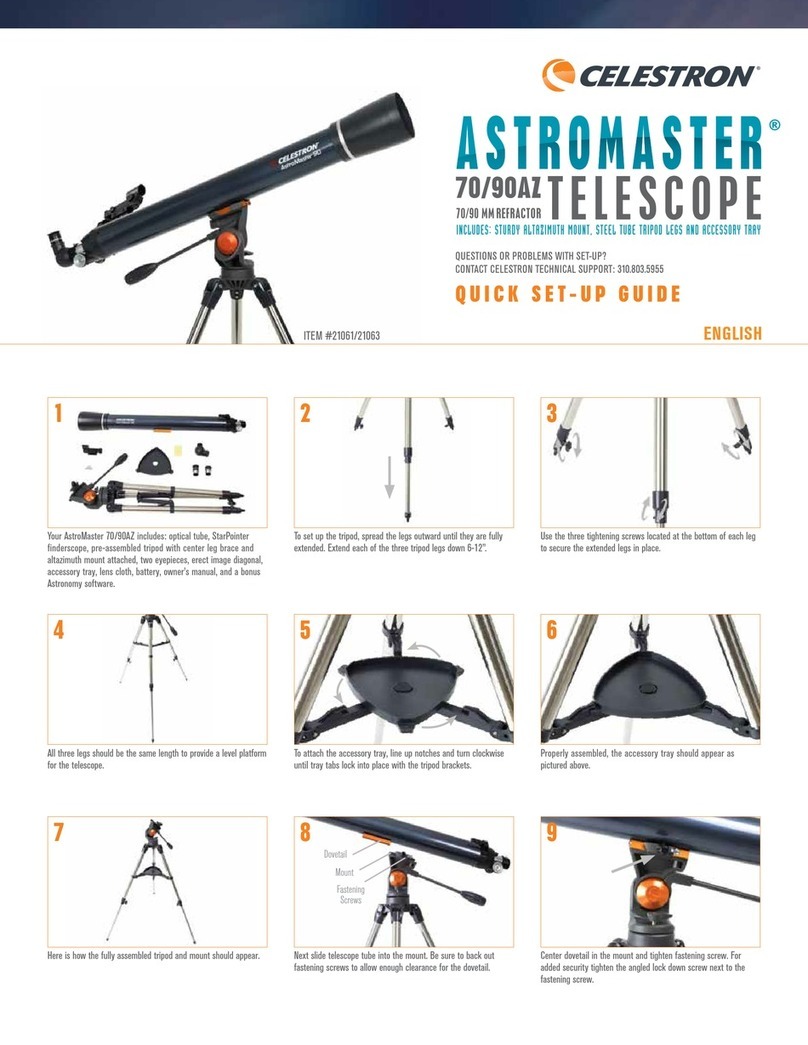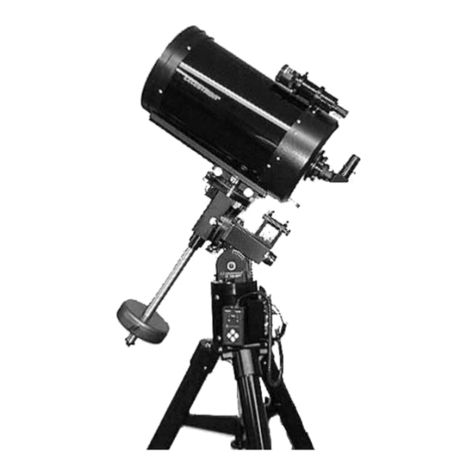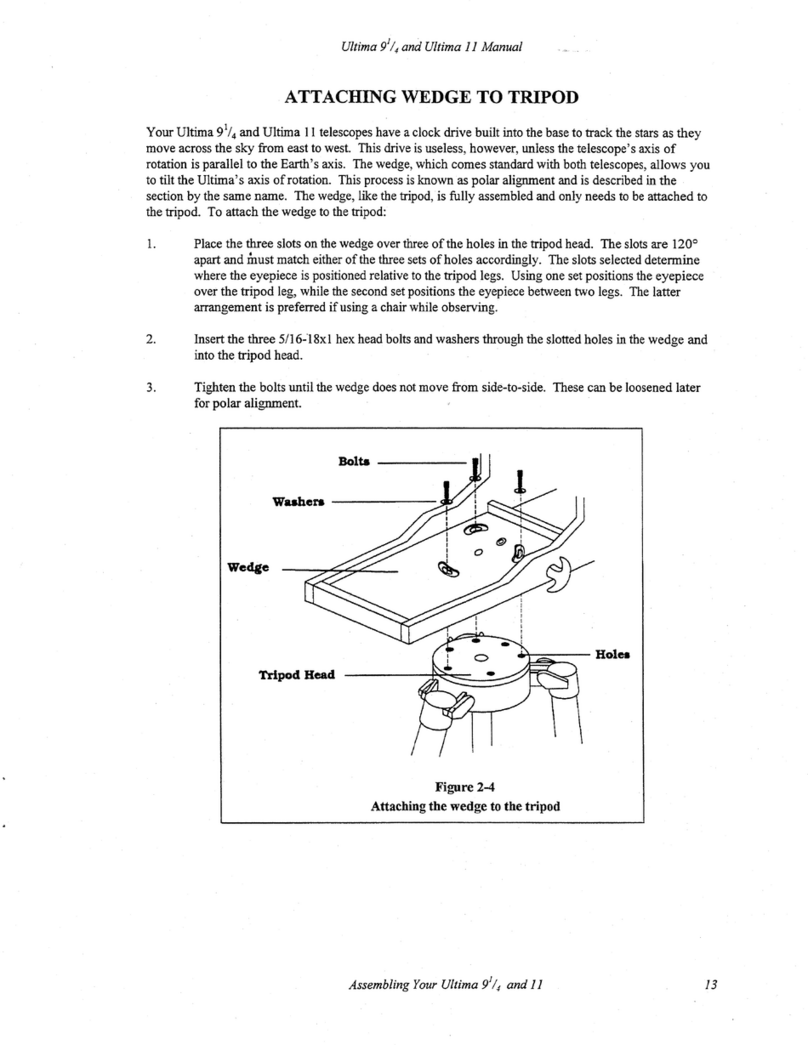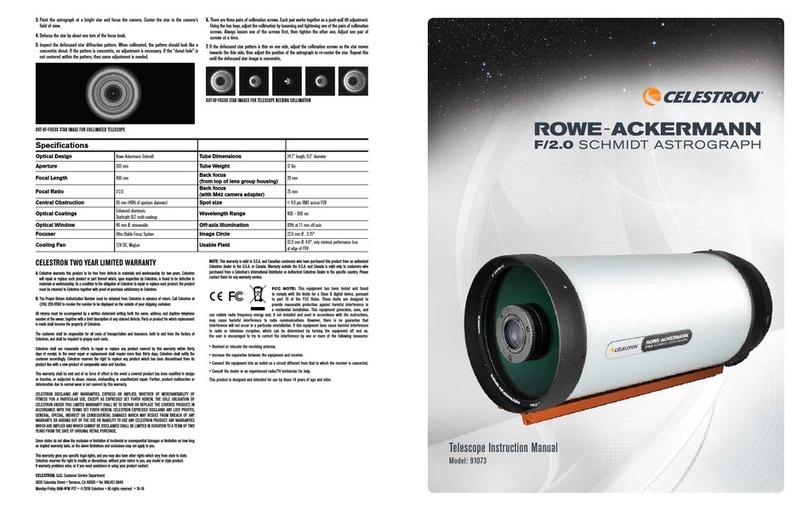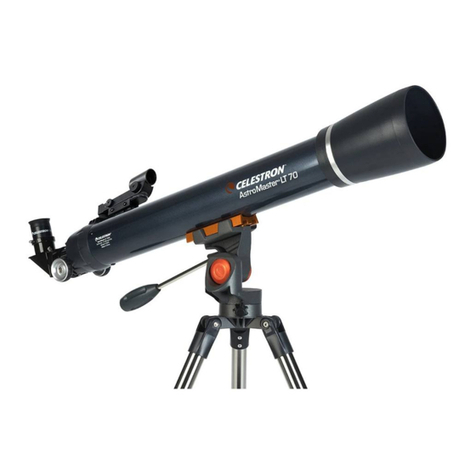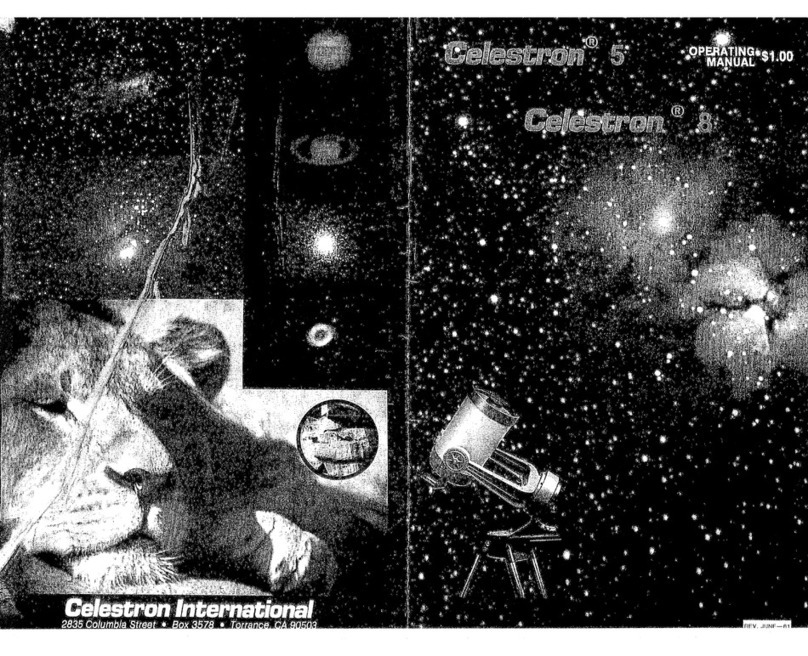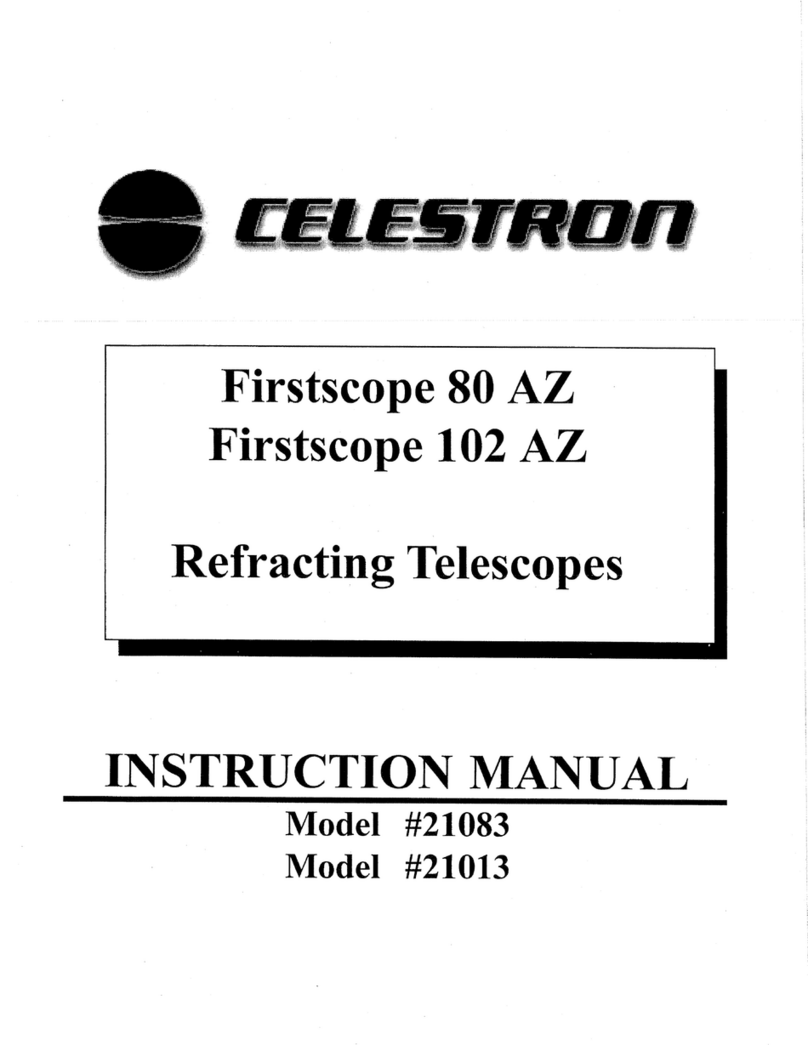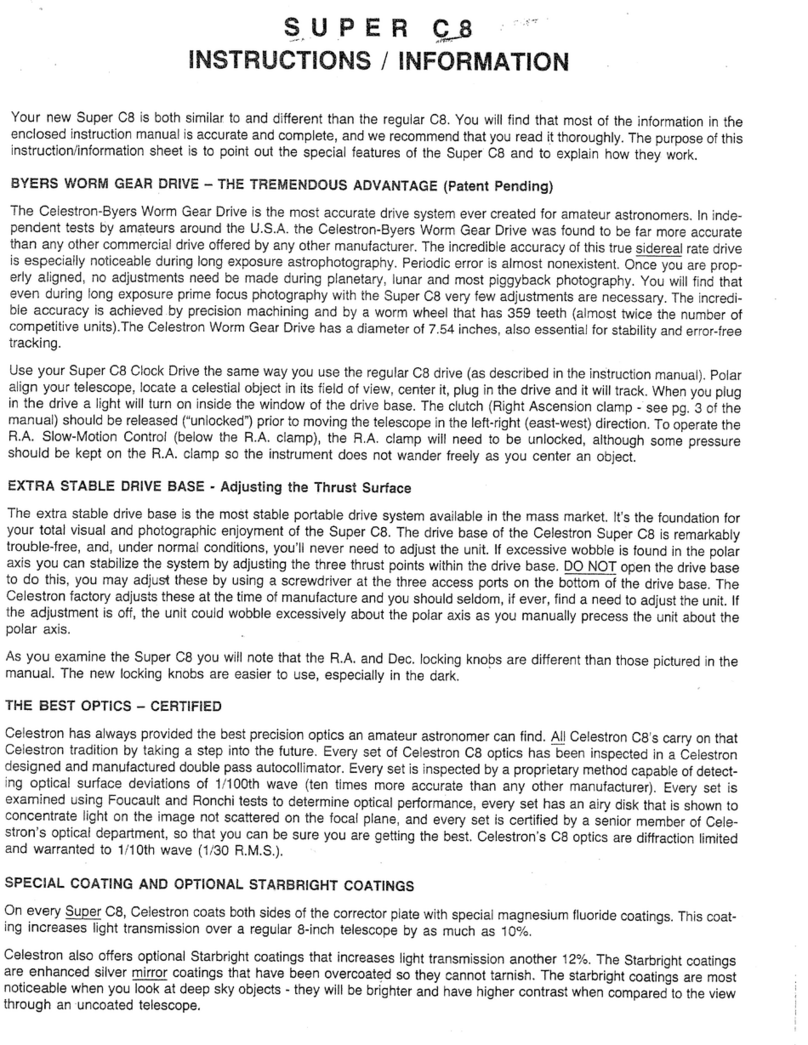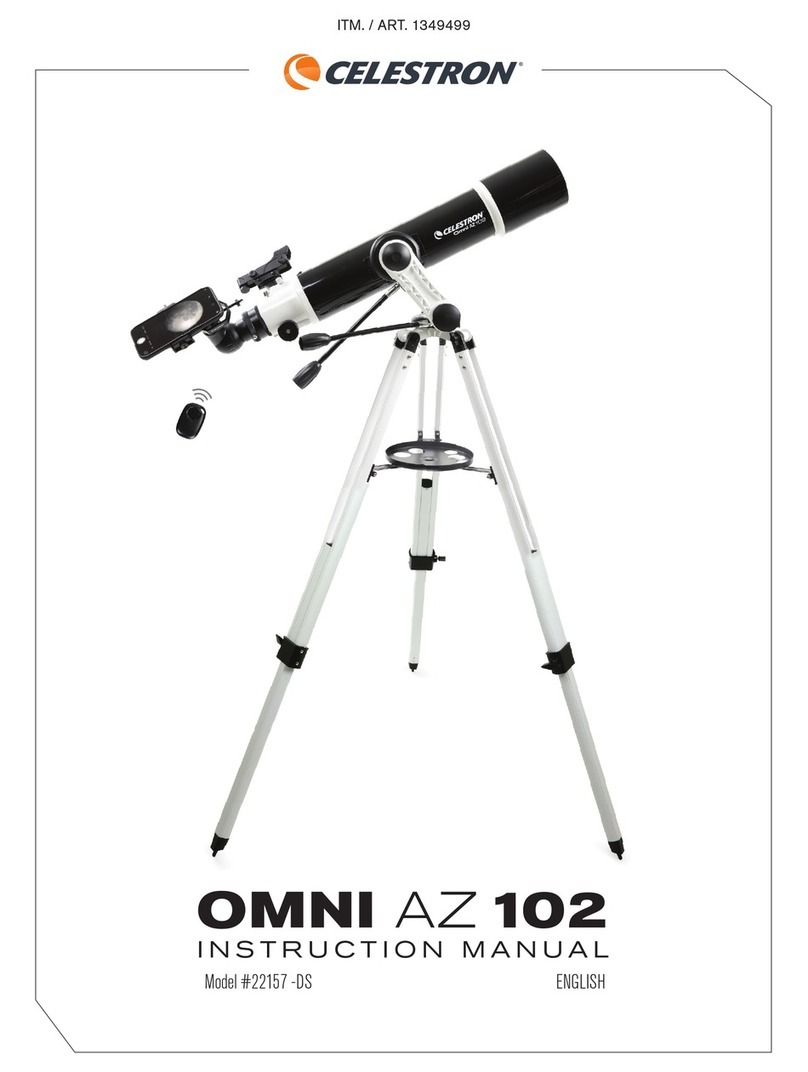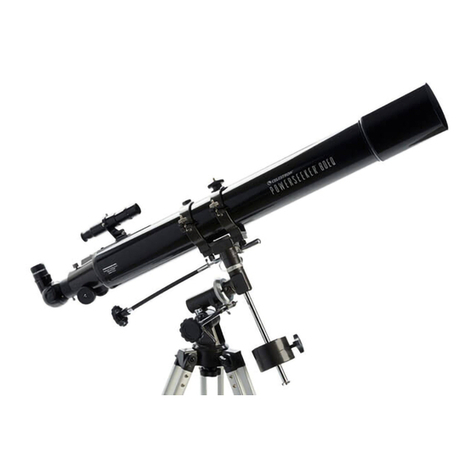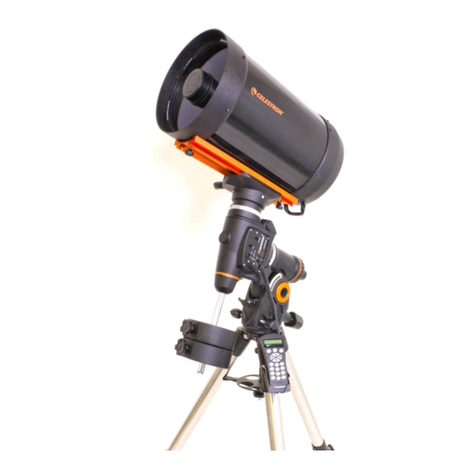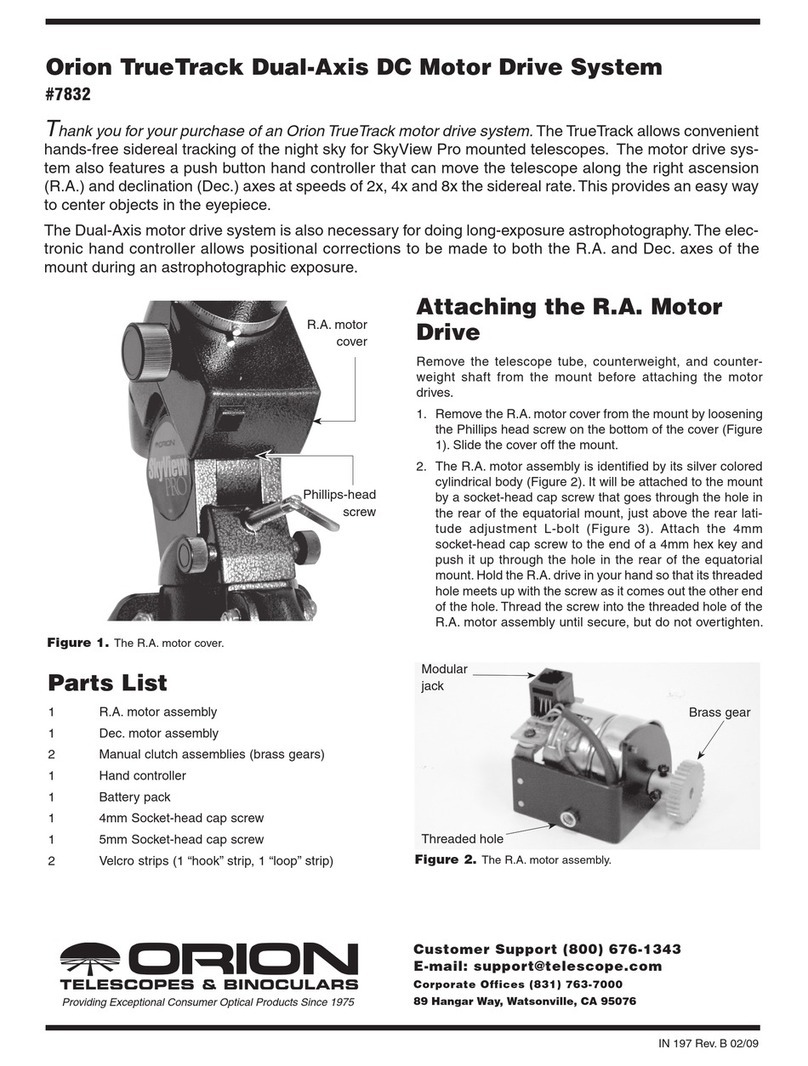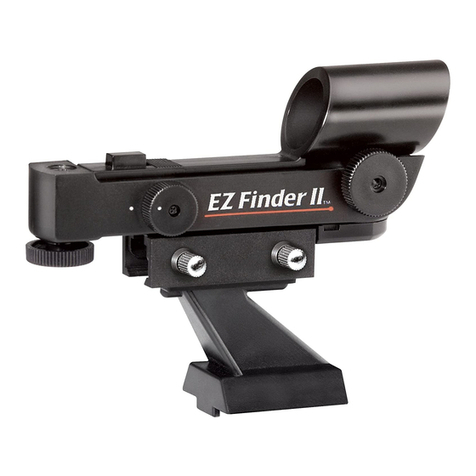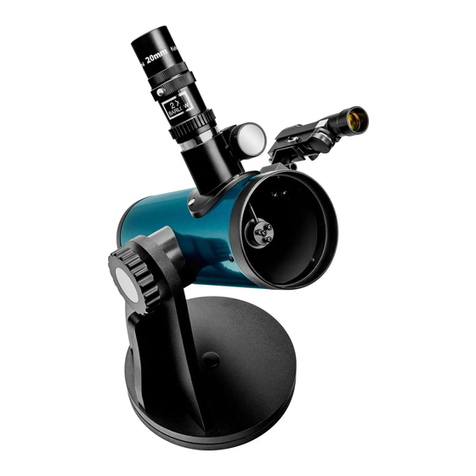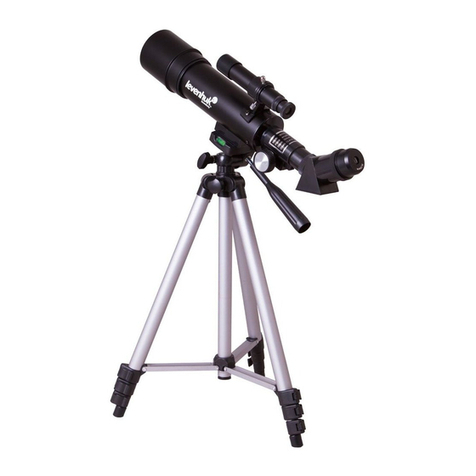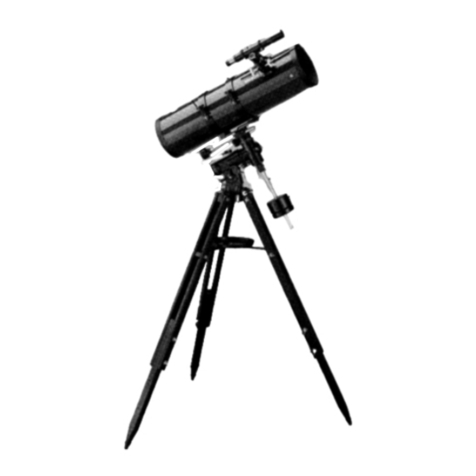
COMPUTERIZED TELESCOPE
Congratulations on your purchase of the Celestron NexStar! The NexStar ushers in a whole new
generation of computer-automated technology. Simple and friendly to use, the NexStar is up and
running after locating just three bright objects. It’s the perfect combination of power and portability.
If you are new to astronomy, you may wish to start off by using the NexStar’s built-in Sky Tour
feature, which commands the NexStar to find the most interesting objects in the sky and automatically
slews to each one. Or if you are an experienced amateur, you will appreciate the comprehensive
database of over 40,000 objects, including customized lists of all the best deep-sky objects, bright
double stars and variable stars. No matter what level you are starting out at, the NexStar will reveal
the wonders of the universe to you and your friends.
Some of the many standard features of the NexStar include:
• Incredible 4°/second slew speed
• Fully enclosed motors and optical encoders for position location
• NexStar+ Hand Control with over 40,000 object database
• Storage for programmable user defined objects
• Many other high performance features
The NexStar’s deluxe features, combined with Celestron’s legendary optical standards, give amateur
astronomers one of the most sophisticated and easy-to-use telescopes available on the market today.
Take the time to read through this manual before embarking on your journey through the Universe.
It may take a few observing sessions to become familiar with your NexStar, so you should keep this
manual handy until you have fully mastered your telescope’s operation. The NexStar+ Hand Control
has built-in instructions to guide you through all the alignment procedures needed to have the tele-
scope up and running in minutes. Use this manual in conjunction with the on-screen instructions
provided by the Hand Control. The manual gives detailed information regarding each step, as well as
needed reference material and helpful hints guaranteed to make your observing experience as simple
and pleasurable as possible.
Your NexStar telescope is designed to give you years of fun and rewarding observations. However,
there are a few things to consider before using your telescope that will ensure your safety and protect
your equipment.
WARNING
Never look directly at the sun with the naked eye or with a telescope (unless using a safe solar filter).
Permanent and irreversible eye damage may result.
Never use your telescope to project an image of the sun onto any surface. Internal heat build-up can
damage the telescope and any accessories attached to it.
Never use an eyepiece solar filter or a Herschel wedge. Internal heat build-up inside the telescope
can cause these devices to crack or break, allowing unfiltered sunlight to pass through to the eye.
Never leave the telescope unsupervised, either when children are present, or adults who may not be
familiar with the correct operating procedures of your telescope.
INTRODUCTION
4




